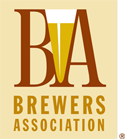Beer Line Cleaning Chemicals – A Breakdown
There are three distinct classes of cleaning chemicals (not just for beer lines): ions, detergents, and enzymes. Each is unique in their chemical structure, rendering them suitable for specific purposes. The major factors to consider when choosing a cleaning solution are the chemical nature of the residue that is being cleaned and the specificity of the cleaning chemical for that particular residue.
For the application of draught beer line cleaning, sugars and proteins are the major residues to be considered. Both of these chemicals exhibit varying degrees of polarity, meaning that they are molecules that carry both negative and positive charges; some are stronger than others, but all are charged nonetheless. Fats and oils, on the other hand, are nonpolar and carry no charge. Fats and oils are found in very minute concentrations in beer, whereas sugars and proteins make up the bulk of the body, flavor, and color of a beer.
Ionic Solutions
Ionic solutions include acids and bases, and are collectively called “electrolytes.” The term “caustic” is frequently used to refer to a basic solution. Ions are the smallest molecules capable of performing big cleaning tasks. Their small size is advantageous because it enables the ion to maximize contact in even the smallest pores and pockets within a contaminated beer line.
Acids utilize the incredibly strong positive charge of protons (Hydrogen ions) to disrupt the bonds and structures of other charged compounds such as proteins, sugars, and even minerals, thus denaturing them and subsequently removing them from a tap system during flushing and rinsing of the system.
The molecular mass of an ionized Hydrogen atom (H+) is 1 atomic mass unit (amu). This is literally the weight of a single proton. Bases, or caustic chemicals, work under the same chemical principle as acids, but they are negatively charged due to the addition of one oxygen atom per hydroxide (OH-) molecule. The oxygen naturally carries a strong negative charge that will disrupt other charged molecules, degrade them, and subsequently remove them from a tap system. Hydroxide molecules are slightly larger, having a mass of 17 amu, but are still very effective at penetrating molecular residues in beer lines, considering sugar and protein masses range from 180 amu to over 1,000,000 amu.
Because ions are so small and their reactivity is non-discriminatory toward polar compounds, acids and bases are capable of breaking down nearly any sugar and protein residue regardless of the size and structure of its chemical constituents.
Detergents
Detergents (aka soaps, surfactants) are designed to attack both polar and nonpolar residues. In chemistry, this unique characteristic of reactivity is called “amphiphilic” – soluble in both water and oil.
Detergents are unique and very useful for certain applications. They can be mixed with water, and the solution may be used to remove sugar, protein, mineral, oil, fat, and grease residues. Detergents’ non-specificity for residues makes them a versatile cleaning compound, and they are generally very good at degreasing and removing fats and oils. Contrary to our application of draught beer line cleaning though, nonpolar fats and oils only occur in trace amounts in beer and have a low tendency to adhere and remain in beer lines.
It is true that hop oils are extracted during the brewing process for their bittering and aromatic attributes, and hops are probably the greatest contributor of oils to any beer. Grain (barley) produces a negligible amount of oil. Of course all plants produce oils – olive oil, corn oil, sunflower oil, peanut oil – but have you ever heard of barley oil? (It actually does exist and is very healthy for you as an antioxidant and source of vitamin E).
Detergents work by forming micelles in water. A micelle is an assembly of surfactant molecules which form a ball-like structure with the polar portions of the molecules on the outside in contact with water (also polar) and the nonpolar ends sequestered on the inside of the ball away from exposure to water. This enables the fatty (nonpolar) ends of the surfactant molecules to disperse throughout a water-based solution and react with other fats and oils. Micelles range in size and are generally far greater in mass than ions. Micelle sizes in terms of amu are in the 100s to 1,000s. This renders them less capable of penetrating dense residues and cleaning porous surfaces such as vinyl.
Enzymes
Enzymes are by far the largest molecules used for cleaning, ranging from about 50,000 amu to well over 100,000 amu. They are also exquisitely specific in their reactivity with other molecules. Textbooks commonly describe enzymatic reactions as a “lock and key” fit. For each enzymatic reaction there is a specific reactant substrate that will fit the active site of a single enzyme type. It is the sole duty of each enzyme type to process a specific reaction involving only the substrate molecule(s) that fit its active site.
The benefit of using enzymes is that they function with extreme precision and work at an incredibly fast rate. This is ideal when a single known molecule is being targeted for destruction. The obvious disadvantage of enzyme-based cleaning solutions for draught beer lines is that there is a wide range of contaminants present, many of which are unknown. Sugar residues must be targeted using enzymes that specifically break down glucose, fructose, lactose, maltose, maltotriose, dextrins, starch, and any potential cross-linking between these sugars. In addition, enzymes that break the numerous peptide bonds within different proteins must also be present.
Last, enzymes that break apart cell walls of invading microbes and digest their by-products must also be present in the cleaning solution. Any chemical contaminant present that has not been degraded by the presence of a specific enzyme will essentially remain untouched. This is how enzyme specificity becomes a serious disadvantage when applied to draught beer line cleaning. It is inconceivable the number of different chemical compounds present in draught beer lines that need to be targeted for destruction and removed during cleaning. Although enzymes may be the fastest and hardest working of all cleaning compounds, they are impractical when tackling the array of known and unknown chemical contaminants that are present in beer lines.
Furthermore, enzymes only perform optimally under specific physical conditions. Temperature and pH are factors that limit enzyme activity. For proper enzyme function, both must be maintained exactly within the enzyme’s functional range, otherwise the enzyme will remain inactive or be denatured.
The preferred cleaning chemicals throughout the draught beer industry are acids and bases. They are cheap, easy to use, very powerful at low concentrations (2-3%), and rinse completely from a tap system due to their high solubility in water. Electrolytes have the longest standing reputation as an effective line cleaning chemical, as their use for this application began in the 1930s. Electrolytes are isolated naturally from the environment as mineral salts Sodium Hydroxide (NaOH), Potassium Hydroxide (KOH), Phosphoric acid (H3PO4) and Nitric acid (HNO3).
Cleveland Beer Line Cleaning uses only acid/base chemistry when cleaning beer lines. We have tested other chemicals and have found them to be effective, but none as dependable as the good old-fashioned electrolyte.



